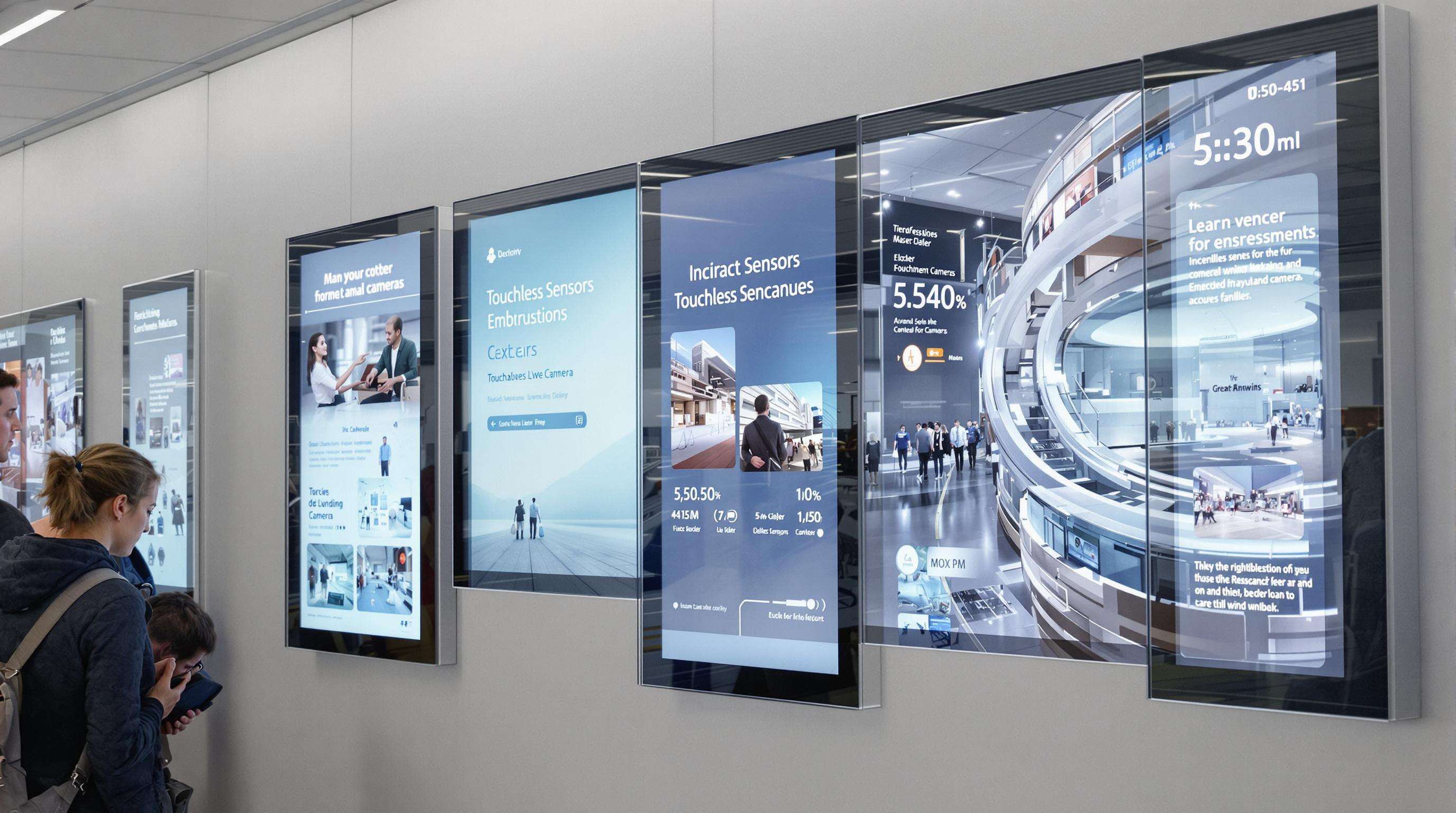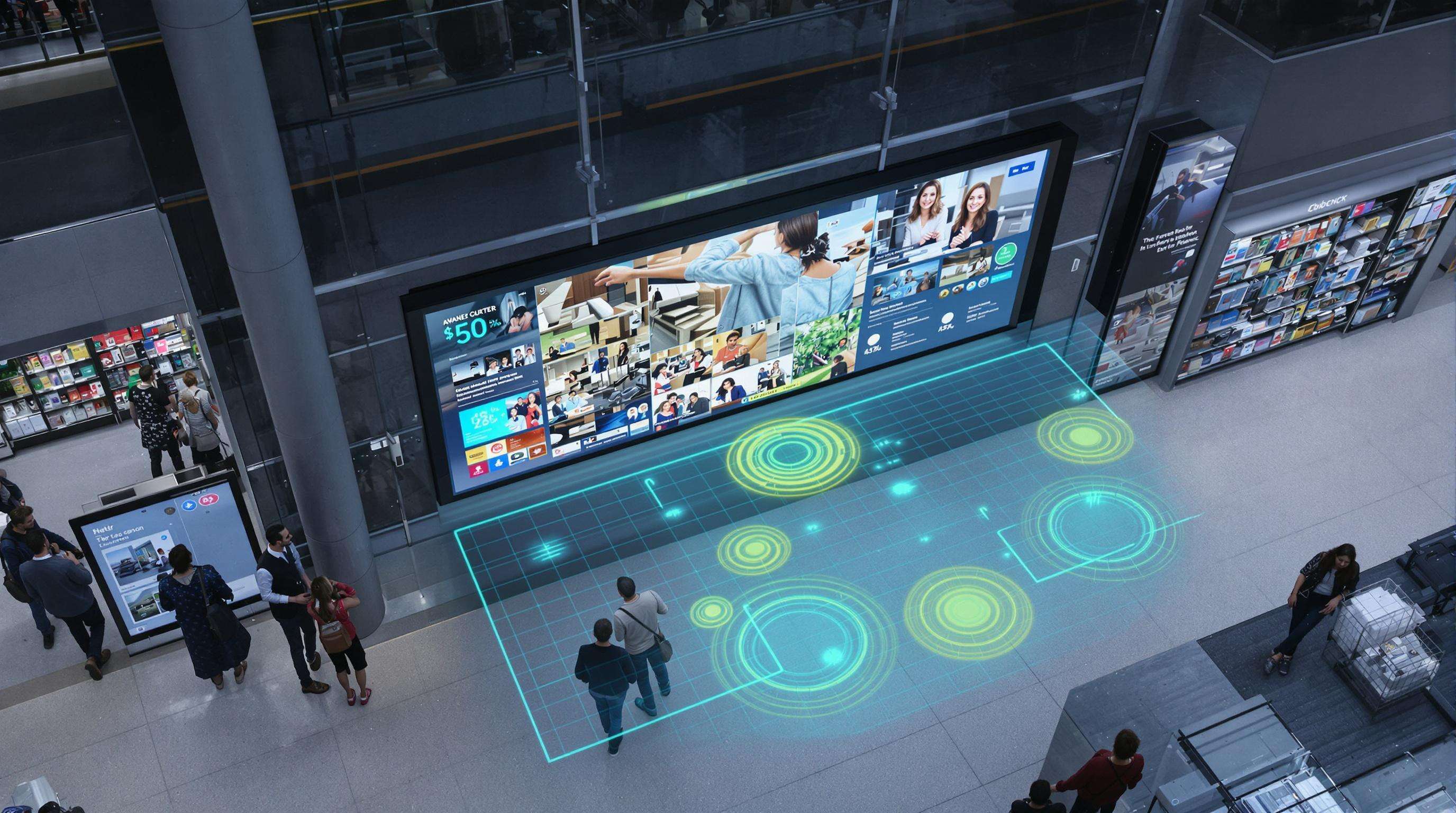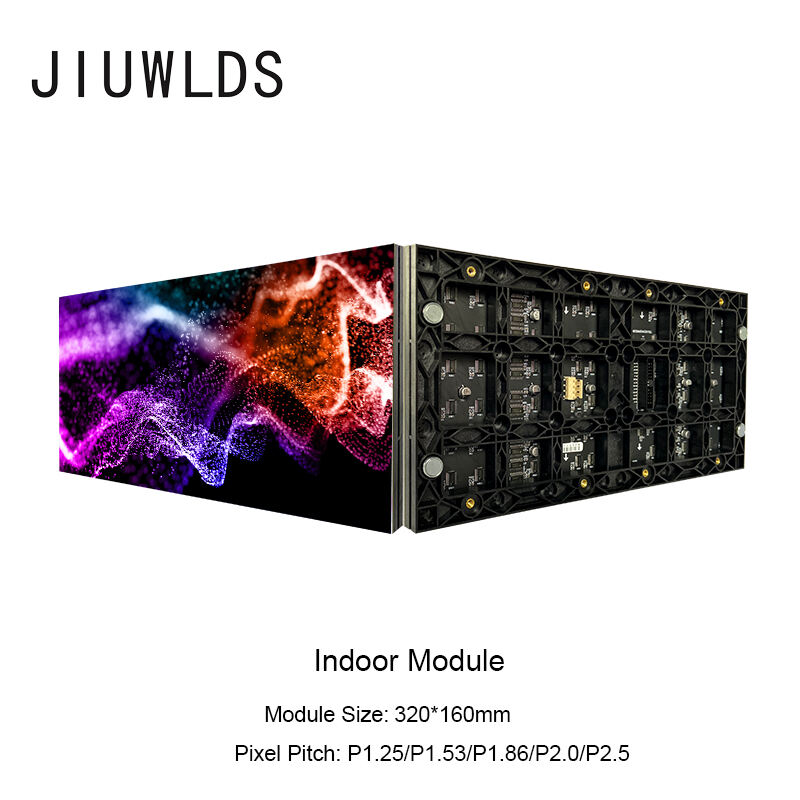Shenjat Digjitale: Përvoja Interaktive për Klientët
Evolucioni i Sinjalistikës Digjitale në Pjesëmarrjen e Konsumatorit
Sinjalistika digjitale ka evoluar nga reklamat e palëvizshme në platforma të sofistikuara të pjesëmarrjes që krijojnë dialogje personalizuese, me dy drejtime duke përdorur analitikë në kohë reale. Tani bizneset e kuptojnë se reklamat e thjeshta nuk tërheqin më vëmendjen në ambientet e ngarkuara. Zgjidhjet moderne përshtasin përmbajtjen dinamikisht bazuar në sjelljen e konsumatorit, duke krijuar lidhje më të thella përmes pikave interaktive të kontaktit.
Parashikimet kyçe teknologjike kanë nxitur këtë zhvendosje:
- Kompjuterika në re mundëson azhurnime të menjëhershme të përmbajtjes nëpër rrjetet globale
- Integrimi i sensorëve lejon që ekranet të reagojnë ndaj afësisë së publikut (p.sh., të shfaqin shiritorët në ditët me shi ose të përditësojnë menutë gjatë orëve të mëngjesit)
Ndikimi është i matshëm—markat që përdorin ekranet interaktive raportojnë 35% më shumë shkallë kujtese kundrejt alternativave statike. Metrikat e angazhimit tani janë të fokusuar në veprime konkrete si skanimi i kodit QR, interaksionet me gest, dhe koha e qëndrimit, duke pasqyruar preferencën e konsumatorëve për eksperienca të thella në vend të konsumit pasiv.
Duke shikuar përpara, personalizimi prediktiv i drejtuar nga AI do të analizojë shprehjet e fytyrës (duke ruajtur anoniminë) dhe të dhënat demografike për të përshtatur përmbajtjen para se pamëtarët të afrë ekranet. Kjo e vendos sinjalizimin digjital si urë midis udhëtimit fizik dhe digjital të konsumatorit, duke riperkufizuar marrëdhëniet markë-klient nëpërmjet përshtatshmërisë së kontekstit
Teknologjitë Bërthamë që Fuqizojnë Sinjalizimin Digjital Interaktiv

Sistemet moderne integrojnë tri teknologji kyçe për të transformuar vështrimin pasiv në pjesëmarrje aktive:
Interaksion pa prekje: Sensorë dhe integrim kamerash
Sensorët infra të kuq dhe kamerat 3D e mundësojnë kontrollin me gesta, të përshtatshëm për mjedise të ndjeshme për higjenë si spitaret. Sistemet e avancuara kombinojnë sensorë termal për informacione demografike me kamera që vëzhgojnë thellësinë për të optimizuar dukshmërinë e përmbajtjes dhe zonat e interaksionit.
Analitikë të fuqizuar nga Inteligjenca Artificiale për përmbajtje të personalizuar
Mësimi mekanik përpunon të dhëna në kohë reale—nga detektimi anonim i fytyrës deri te faktorët ambiental—për të personalizuar dinamikisht përmbajtjen. Analitika identifikon modele kulmi të angazhimit, të dhëna demografike dhe preferencat, duke lejuar rregullime automatike në bazë të shkaktarëve si moti apo koha e qëndrimit.
Sisteme Kontrolli me Gesta
Kamerat me ndjeshmëri për thellësinë interpretojnë lëvizjet e qëllimshme të trupit si komanda, duke eliminuar pengesat e prekjes. Aplikimet në tregti lejojnë rrotullimin virtual të produkteve përmes gesteve të dorës, ndërsa muzeumet përdorin lëvizjet e shtypjes për të zmadhuar artefaktet, duke krijuar ndërveprime të thelluara pa ndërfaqe.
Rastet e Përdorimit të Industrisë
Tregti: Provë Virtuale me Realitet të Shtuar
Pasqyrat me realitet të shtuar i lejojnë klientët të visualizojnë çdo lloj rrobesë pa kontakt fizik, duke rritur konvertimet për 30% dhe duke zvogëluar kthimet. Informacioni i menjëhershëm përmirëson rekomandimet, duke personalizuar udhëtimin e blerjes.
Shëndetësi: Orientim dhe Edukim i Pacientëve
Terminalët pa prekje e thjeshtojnë orientimin në spitale, ndërsa ekranet interaktive përmirësojnë kuptimin nga pacientët për 42% . Përditësimet në kohë reale i drejtojnë përsëri vizitorët gjatë emergjencave, duke optimizuar rrjedhën e punës së stafit.
Arsim: Navigim në Fakultet
Universitetet përdorin shenja të integruara në celular për orientim në kohë reale, duke zvogëluar kohën e orientimit për 60% . Sensorët e pranisë menaxhojnë lëvizjen e turmës, ndërsa drejtoritë digjitale theksojnë burimet e kampusit.
QSR: Tabelat Dinamike të Menusë
Ekranet e lidhura në kohë reale i përshtasin promocionet në bazë të trafikut dhe inventarit, duke rritur konvertimin e shitjeve shtesë nga 27% . Përditësimet automatike pasqyrojnë çmimin dhe informacionin nutricional në të gjitha vendet.
Matja e Suksesit: Metrikat Kyçe

Koha e Qëndrimit krahasuar me Shkallën e Konvertimit
Edhe pse qëndrimi më i gjatë mund të tregojë interes, shkalla e konvertimit (p.sh., skanimi i QR ose blerjet) është më e rëndësishme. Dyqanet që i japin prioritet qartësisë së promocioneve në raport me estetikën arrijnë 28% konvertim më të lartë pavarësisht 15% kohë më të shkurtër të qëndrimit .
Efektiviteti i personalizimit
Analiza e heatmapeve zbulon modele pjesëmarrjeje, duke lejuar bizneseve të ripozicionojnë CTAt dinamike në zonat me dukshmëri të lartë—duke rritur shkallën e klikimeve me 35% .
Trendet e reja
Imersioni shumësensorial
Sinjalistika e ardhmshme angazhon shumë shqisa:
- Sistemet e shpërndarjes së erës dhe kushtojnë përvojën taktilë përmirësojnë provat virtuale
- Lëvizja me gesta me sinjale audio redukton kohën e kërkimit në menynë me 57%
- Iluminimi ambiental dhe audioja rregullohen dinamikisht në varësi të dendësisë së turmës
Strategji zbatimi për ROI
Ciklet e rinovimit të përmbajtjes
- Përditësimet javore e nxitin 33% më shumë konvertime
- Integroni API-të e inventarit për të shfaqur automatikisht produktet në dispozicion (duke zvogëluar gabimet nga 90% )
- Përdorni një rregulla 70/30 : 70% përmbajtje e përhershme, 30% promovime të kohëzuara
Protokolle Mirëmbajtjeje
- Monitorimi i paracaktuar nga distanca parandalon 80% e dështimeve
- Sistemet e riprodhimit redundante sigurojnë funksionim të papërpre.
- Programoni azhurnimet e firmware gjatë orëve jo të mëngjesit.
- Bashkëpunoni me teknikët vendorë për zgjidhje në vend për £2 orë në mjediset kritike.
Sensorët termikë dhe softveri vetëshërues i ruajnë performancën në kushte ekstreme duke i kursyer kostot e energjisë nga 17% , duke siguruar performancë të qëndrueshme.
Seksioni i FAQ
Cila është përparësia kryesore e përdorimit të shenjave digitale interactive?
Shenjat digitale interactive lejojnë bizneset të angazhohen me konsumatorët në mënyrë më të personalizuar dhe të thellë, duke çuar në shkallë më të lartë të kujtesës dhe lidhjeve më të thellë përmes analizave në kohë reale dhe përshtatjes së përmbajtjes.
Si e përmirëson AI shenjat digitale?
Personalizimi i drejtuar nga AI analizon shprehjet e fytyrës dhe të dhënat demografike për të përshtatur përmbajtjen, duke e bërë bashkëveprimin më të përshtatshëm dhe duke e rritur angazhimin e konsumatorëve.
Pse është e rëndësishme bashkëveprimi pa prekje në hapësirat publike?
Interaksioni pa prekje është i rëndësishëm, veçanërisht në ambiente të ndjeshme për higjenë si spitalet, pasi lejon kontrollin bazuar në geste pa kontakt fizik, duke siguruar pastërtinë dhe sigurinë.
Si matin bizneset suksesin e shenjave digjitale?
Suksesi matet nëpërmjet metrikave si koha e qëndrimit, shkalla e konvertimit dhe modeleve të angazhimit përmes analizës së hartës së nxehtësisë që ndihmon në optimizimin e vendosjes së përmbajtjes dhe efikasitetit të saj.
Cilat strategji përmirësojnë ROI-n për shenjat digjitale?
Strategjitë si ciklet e rishikimit të përmbajtjes, protokollet e mirëmbajtjes proaktive dhe përdorimi i API-ve të inventarit e përmirësojnë ROI-n e shenjave digjitale duke maksimizuar konvertimeve dhe duke zvogëluar ndërprerjet operative.
Recommended Products
 Hot News
Hot News
-
Teknologjia e ekranit LED: sjell një festë vizuale brenda arritjes
2024-07-24
-
Paralajmërimi për temperatura të larta verore, a do të përballen ekranet LED me rrezikun e ndërprerjeve të energjisë? Cili do të jetë ndikimi?
2024-07-24
-
Progresi i kërkimeve të teknologjive kyçe LED në gjysmën e parë të vitit 2024
2024-07-24






